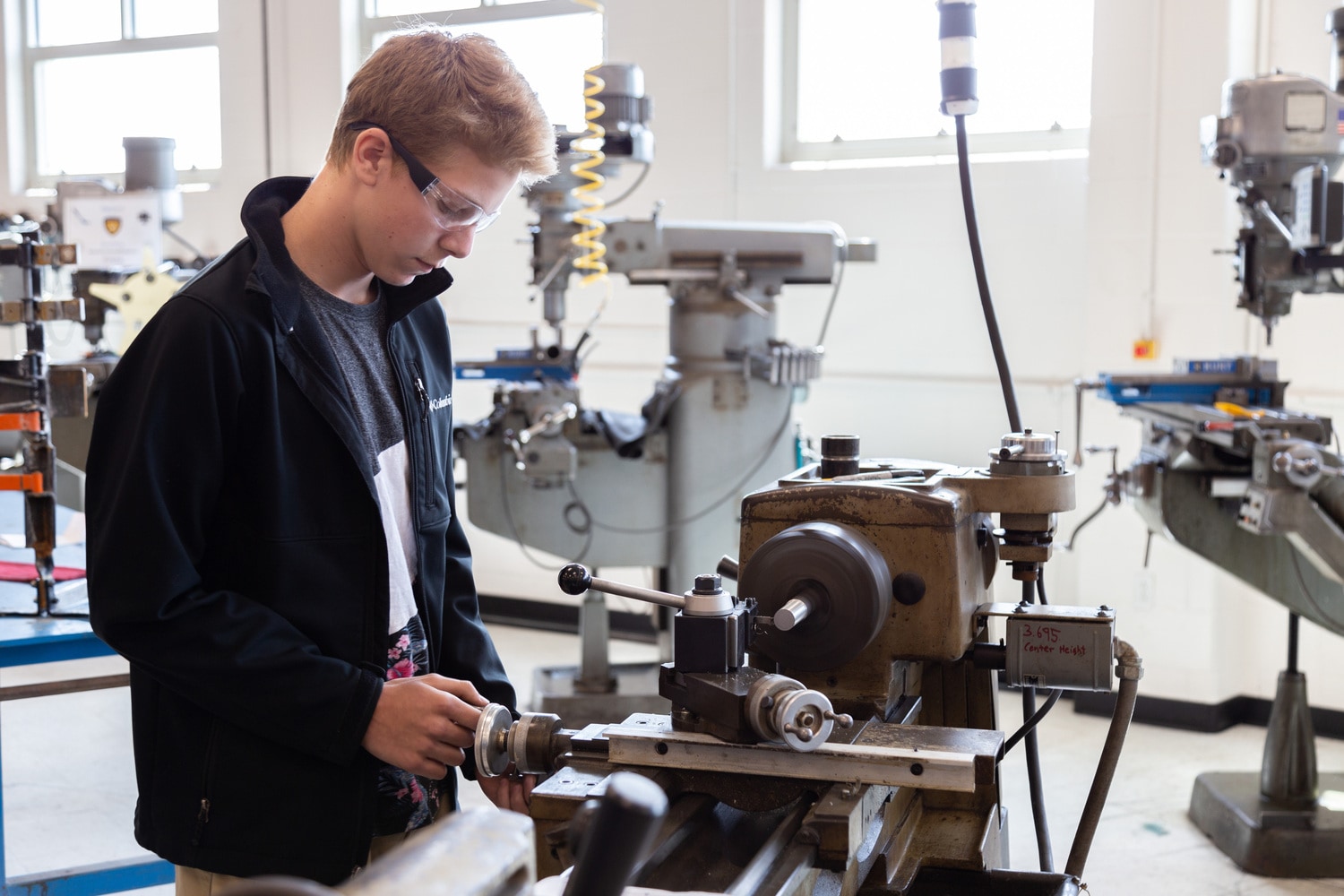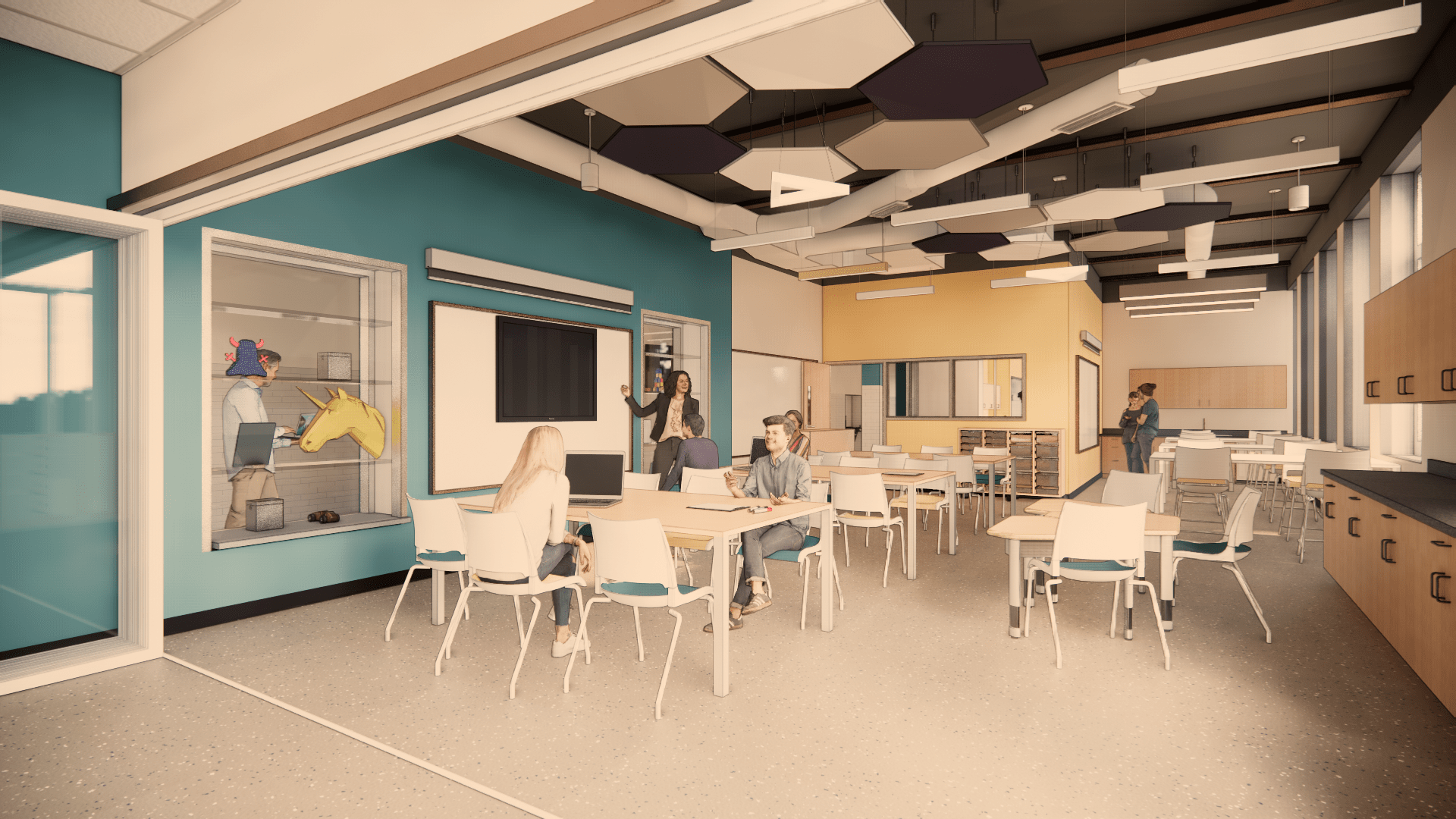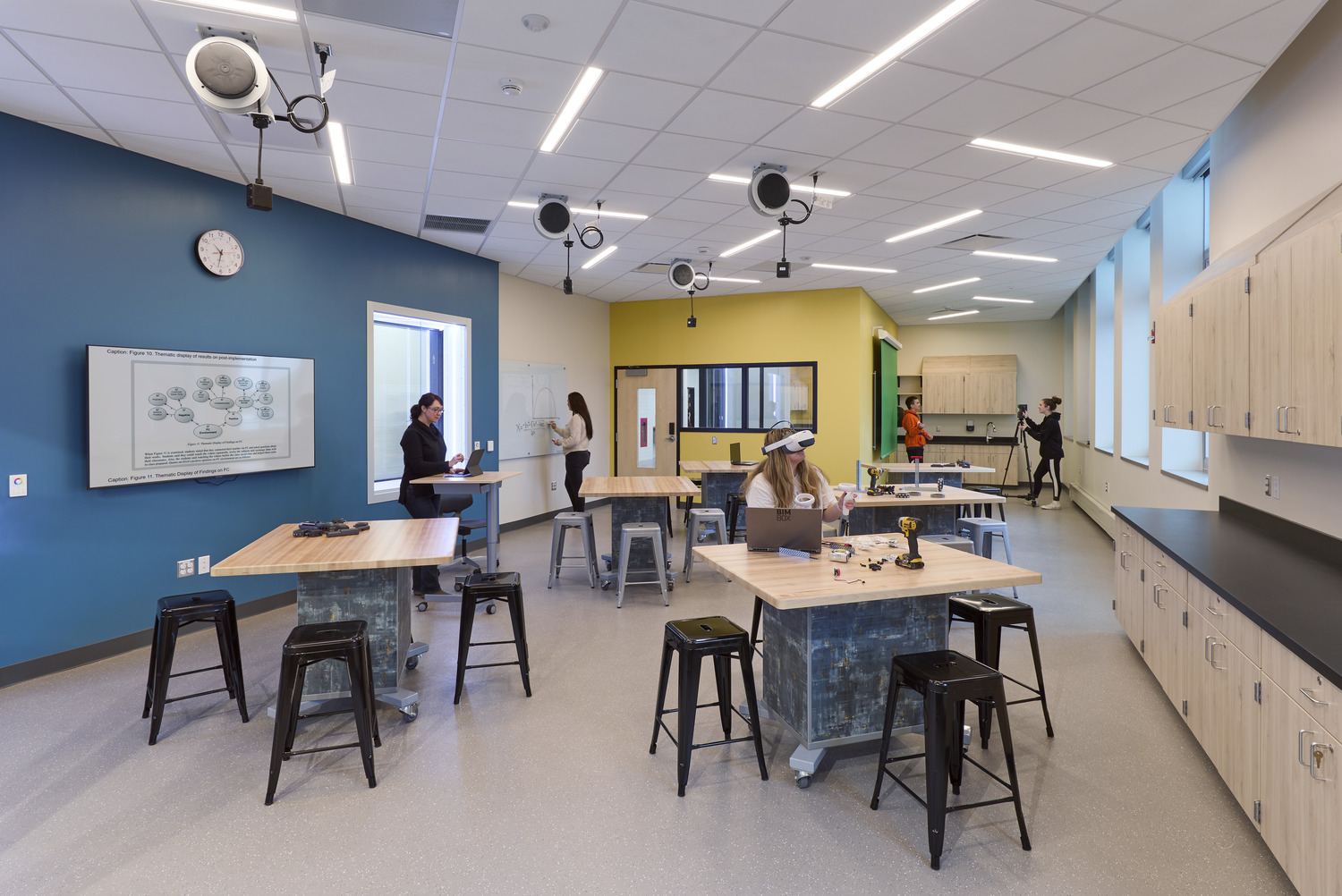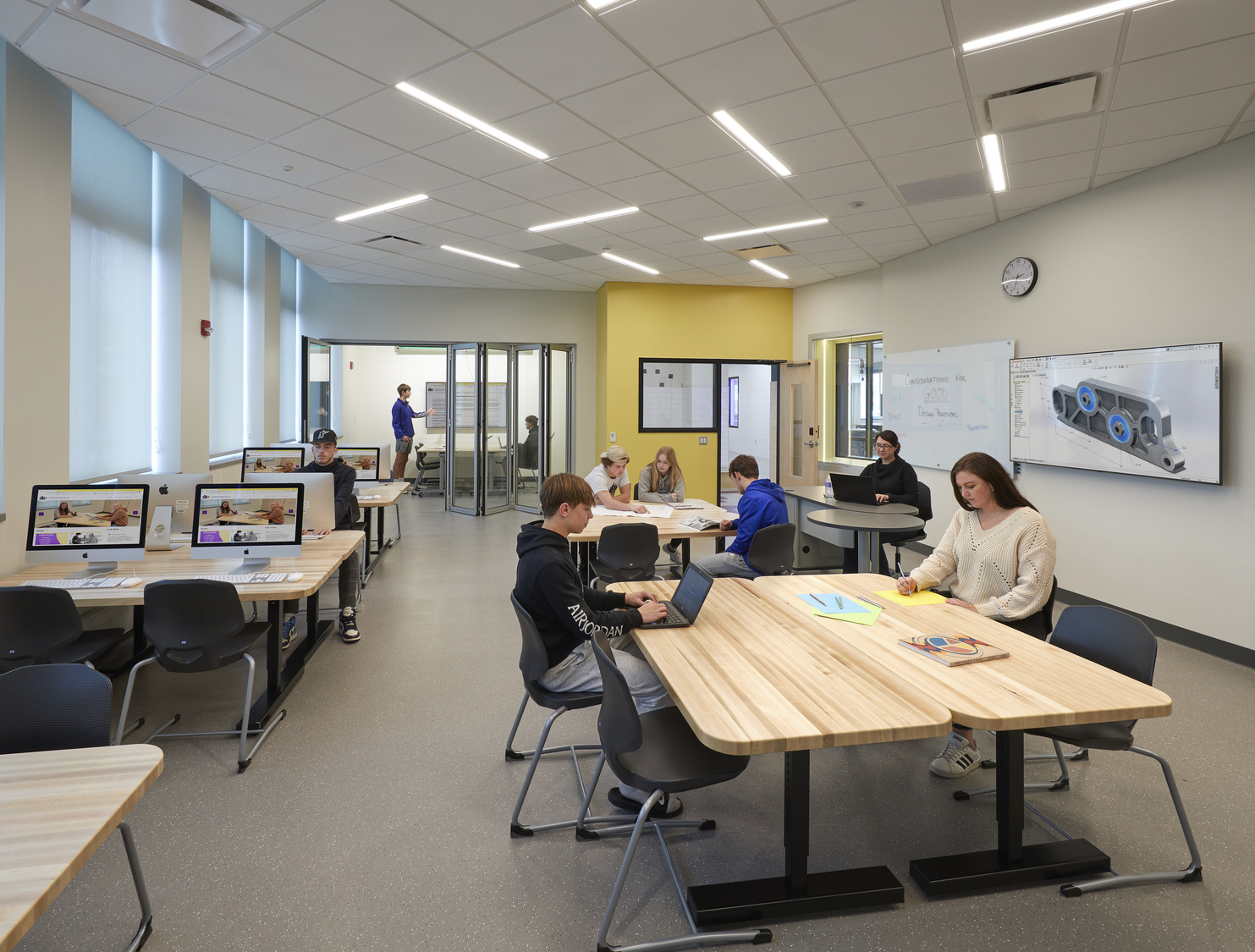A new generation of students requires a new generation of classrooms.
Recall the traditional classroom environment: box-like rooms with rigid rows of bulky, steel-framed desks; students being directed to keep forward-facing attention towards a teacher with white chalk in hand; and limited opportunities for inspirative, hands-on learning amidst a dull, neutral-colored backdrop.
CPL worked with the York Central School District to transform an under-utilized third floor wing of the district’s Middle/High School into an architecturally bold, creatively inspiring center to support science, technology, engineering, art and mathematics (STEAM) learning.







 Previous Project
Previous Project